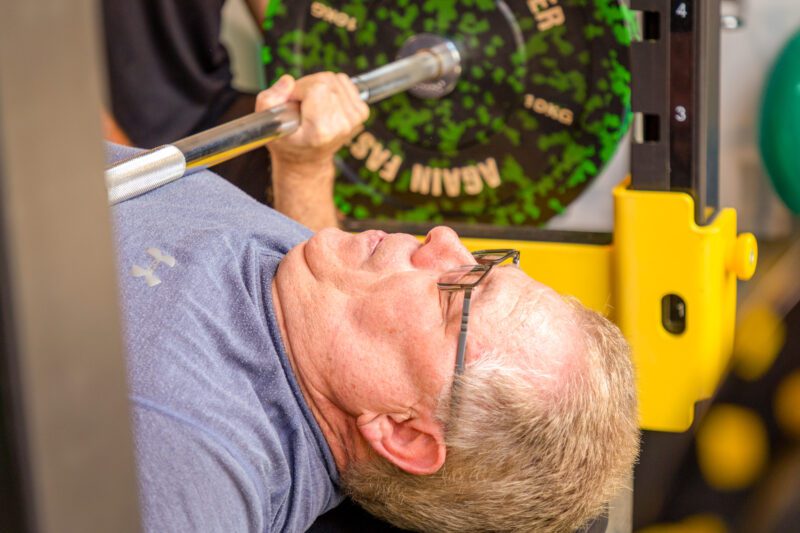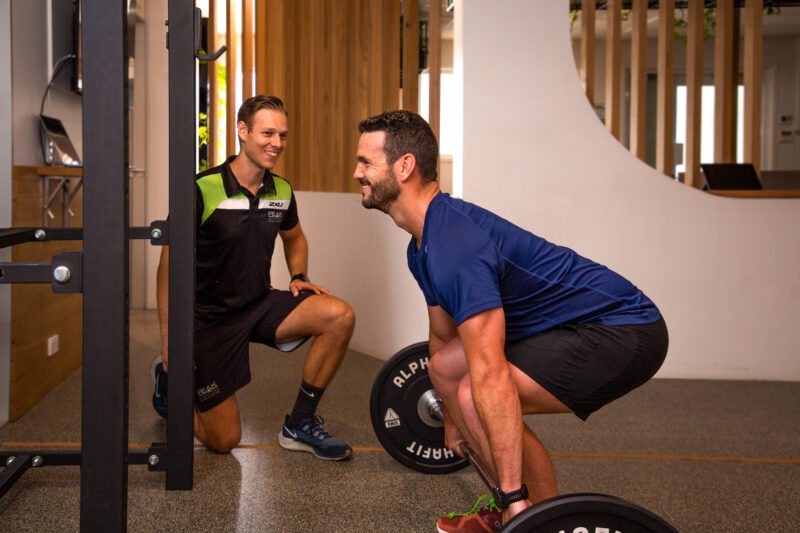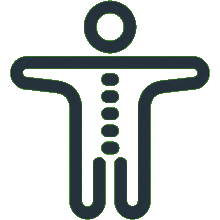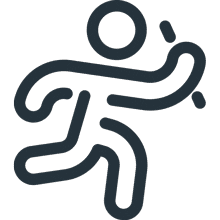
PEAK is Entering a Team in the Sunshine Coast Marathon
Why You Should Join Us! At PEAK, we believe in supporting our athletes to achieve experiences not felt possible. We know that every step, every...
Read moreStrength training plays a critical role in reducing the risk of injury, both in daily life and during physical activities. When you build strength, you reinforce the muscles, tendons, and ligaments, making them more resilient to strains and sprains.
For example, strong muscles around the knee, hip, and ankle joints help absorb shock and reduce the impact on bones and ligaments. This is particularly important for athletes or individuals engaging in high-impact activities. In fact, studies show that strength training can reduce the risk of injury by improving muscle imbalances, stabilizing joints, and enhancing flexibility.
Additionally, strength training increases bone density, which is crucial for preventing fractures, especially in older adults. This combined effect of building muscle strength, joint stability, and bone density is vital for injury prevention.
If you’re a runner, strength training is not only beneficial—it’s essential. While running primarily strengthens the lower body, strength training helps improve performance and reduce the risk of overuse injuries, such as shin splints, IT band syndrome, and runner’s knee.
Strong muscles provide better support for your body when running. For example, stronger glutes, quads, and hamstrings will help you maintain good posture, improve your stride, and boost your speed and endurance. Strength training also helps increase running economy—how efficiently your body uses energy—allowing you to run longer with less fatigue.
By strengthening the core, hips, and lower back, you can enhance your stability, balance, and overall running form.

Many strength training exercises focus on both legs simultaneously, such as squats or deadlifts. However, single-leg exercises (such as single-leg squats or lunges) are equally important and should be incorporated into any routine.
Single-leg strength training is essential because it helps correct imbalances between your left and right legs. Most people have one leg that’s stronger or more dominant, and this imbalance can lead to inefficiency in movement, muscle strain, and injury. Focusing on single-leg exercises helps improve balance, coordination, and stability, which is particularly beneficial for activities like running, jumping, or even walking on uneven surfaces.
Moreover, single-leg training strengthens muscles that help stabilize the knee and ankle joints, reducing the risk of common injuries like sprains or tears. It also promotes proper hip alignment and reduces the chances of compensatory patterns that lead to injuries elsewhere in the body.

As we age, muscle mass naturally decreases—a condition called sarcopenia. This loss of muscle tissue can lead to weaker bones, increased risk of falls, and reduced mobility. That’s why it’s crucial to continue strength training as we get older.
Strength training helps counteract this decline in muscle mass and bone density, keeping our muscles and bones strong and healthy. For older adults, regular strength training can significantly improve functional movement—making everyday tasks like lifting groceries, climbing stairs, or getting out of a chair easier.
Additionally, strength training enhances balance, coordination, and posture, which are essential in preventing falls and maintaining independence. Even a moderate strength training program can lead to significant improvements in mobility, strength, and overall quality of life as we age.

Strength training is often seen as something only men need to do to “bulk up,” but this couldn’t be further from the truth. In fact, strength training offers numerous benefits for women, and it’s just as important for them as it is for men.
For women, strength training helps combat the loss of bone density that occurs with age, particularly after menopause. Osteoporosis is a major concern for women as they age, and weight-bearing exercises like strength training help build bone mass and prevent bone loss.
Additionally, strength training boosts metabolism and helps with fat loss, making it a great tool for weight management. Contrary to the myth that lifting weights makes women bulky, strength training actually helps sculpt a leaner physique by helping to build muscle and reduce fat.
It also has mental health benefits. It helps reduce stress, improve mood, and increase overall confidence. Plus, building strength allows women to feel more capable and empowered in their daily lives.

To reap the full benefits of strength training, consistency is key. The general recommendation is to engage in strength training exercises at least two to three times per week. This allows sufficient time for muscle recovery while still challenging the muscles for growth and strength improvements.
However, the exact frequency depends on your fitness goals and the intensity of your workouts. Beginners should aim for two days per week with a focus on full-body workouts. More advanced lifters may choose to target specific muscle groups on different days, incorporating more specialized exercises.
Remember, rest is equally important. Muscles grow and repair during recovery, so it’s essential to give each muscle group time to recover between workouts. Be sure to listen to your body and avoid overtraining, as rest is crucial for long-term success.
Strength training is a vital part of any fitness routine, offering numerous benefits for injury prevention, running performance, balance, bone health, and overall longevity. Whether you’re a runner, an older adult, a woman, or anyone seeking to improve their health, strength training can help you achieve your fitness goals and enhance your quality of life.
Start incorporating focussed training into your routine today—your body will thank you for it, both now and in the future.

Why You Should Join Us! At PEAK, we believe in supporting our athletes to achieve experiences not felt possible. We know that every step, every...
Read more
When most people talk about going the distance, they’re thinking a marathon. Tim Franklin? He took it several steps further — 26,000 kilometres further,...
Read more
Why Everyone Should Include It in Their Fitness Routine Strength training is often overlooked, especially by those who prefer cardio exercises or those who associate...
Read more
Diabetes is a chronic condition that can have widespread effects on the body, and one of the most overlooked areas it impacts is the...
Read more
Pain is often perceived as a warning sign that something is wrong in the body. While this can be true in cases of an...
Read more
Choosing His Pain Lleyton, one of our dedicated physiotherapists, recently crossed the finish line of the Tokyo Marathon in 5 hours and 20 minutes—a remarkable...
Read more
Finding the perfect running shoe can often feel like a challenge—there’s an overwhelming number of options to choose from, and it’s hard to know...
Read more
Insights into PEAK Coach Callum’s Journey! The road to the marathon is no easy feat, but for many, it’s a bucket list item worth the...
Read more
How Women’s Health Physiotherapy Can Support Your Birth Experience Pregnancy is a time of incredible change and anticipation, and as you approach your birth day,...
Read more
With summer drawing to a close, and taking the stinking hot days with it, for many of us that signals the start of the...
Read moreNot exactly what you're looking for?
View all articles

















Can't find what you're after?
View all ServicesOr email the PEAK team at info@peakssc.com.au
To make a booking outside of business hours, please use our form by clicking here.
To make a booking outside of business hours, please use our form by clicking here.